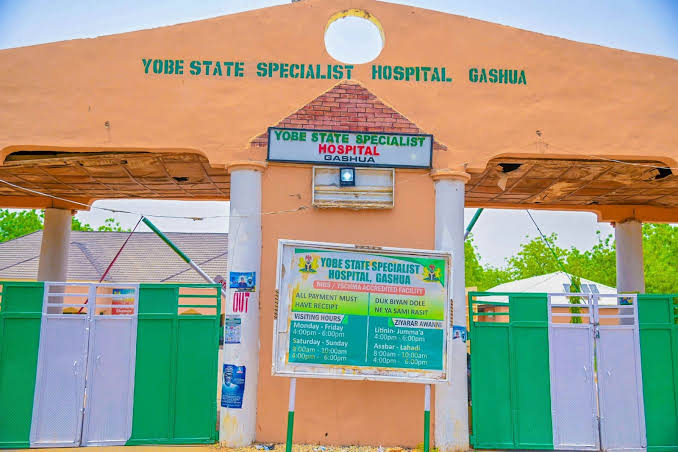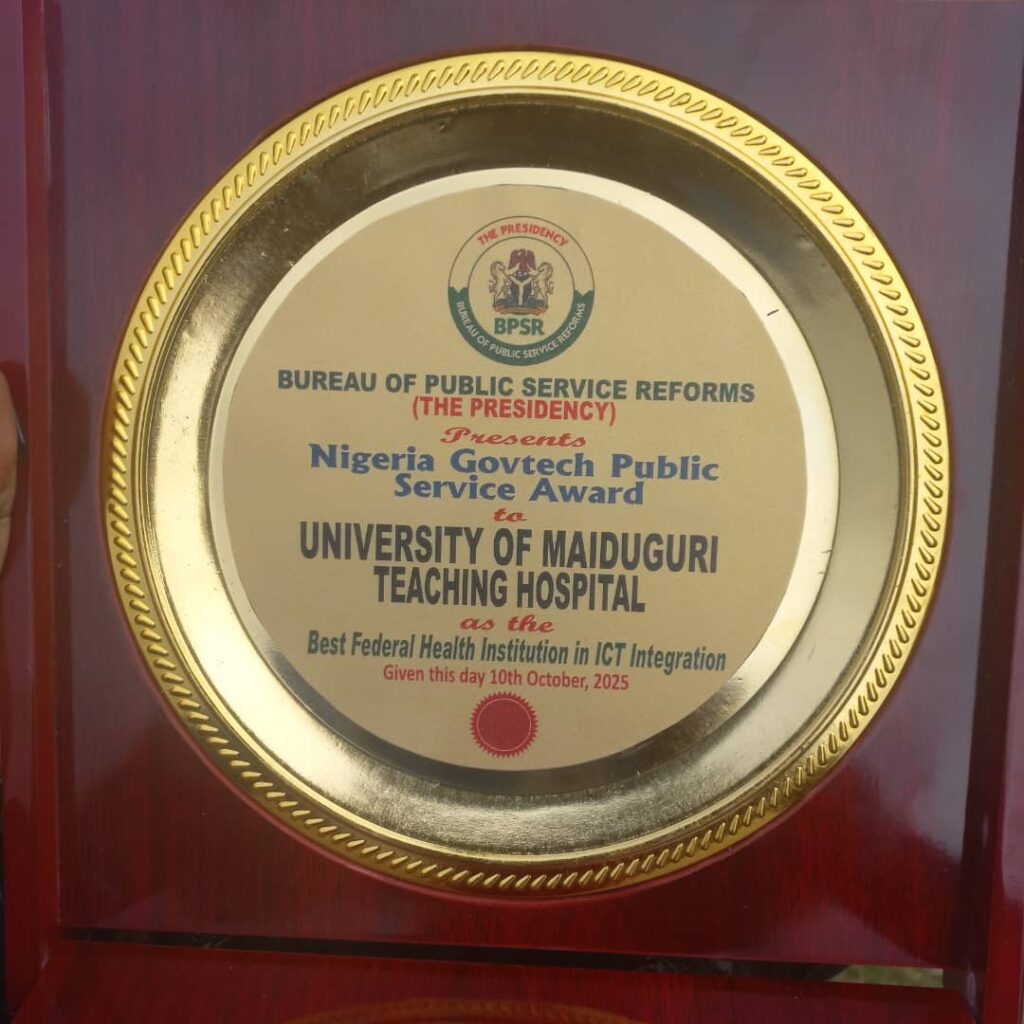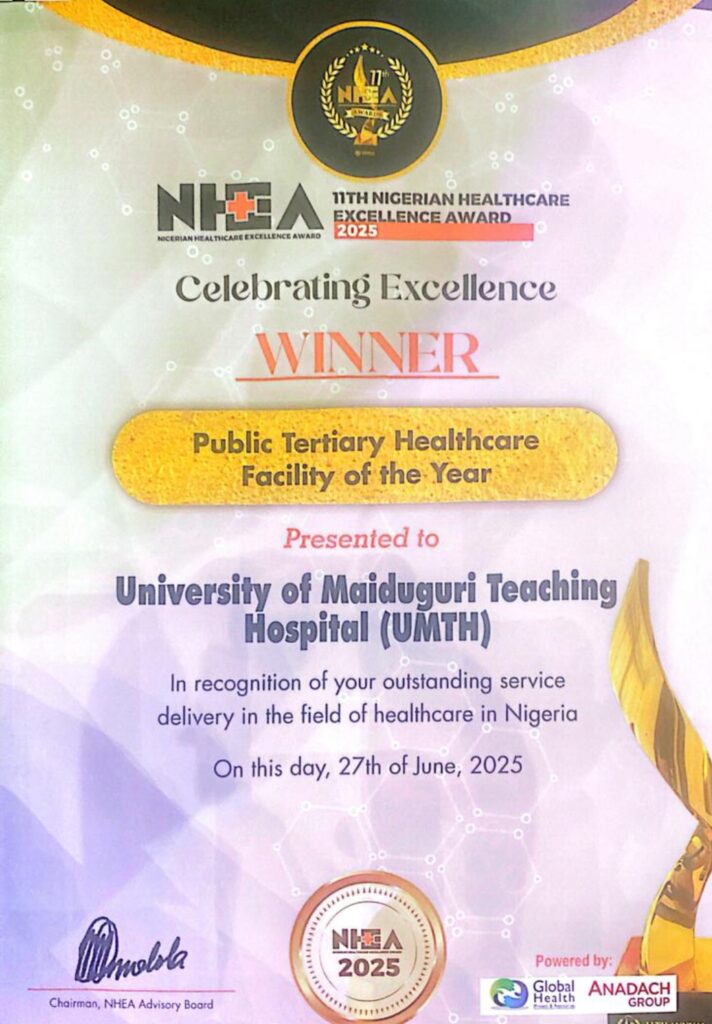Health
UNAIDS calls for urgent global action as progress against HIV falters

UNAIDS calls for urgent global action as progress against HIV falters
New data from Joint United Nations Programme on HIV/AIDS (UNAIDS) data released on Wednesday showed that the decline in new HIV infections which could lead to full-blown AIDS had slowed.
The report revealed that during the last two years of COVID-19 and other global crises, progress against the HIV pandemic faltered, resources shrunk, and millions of lives remained at risk as a result.
The name of the latest report by the Joint UN Programme on HIV and AIDS, In Danger”, coincides with the International AIDS Conference, which started Wednesday in Montreal, Canada.
According to UNAIDS, globally, the number of new infections dropped by only 3.6 per cent between 2020 and 2021, the smallest annual decline in new HIV infections since 2016.
The agency warned that progress in prevention and treatment had faltered worldwide, putting millions of lives at risk.
“In 2021, there were 1.5 million new HIV infections and 650,000 AIDS-related deaths. This translates to 4,000 new HIV infections every day,” Mary Mahy, UNAIDS Director a.i. Data for Impact said.
“That’s 4,000 people who will need to be tested, started on treatment, avoid infecting their partners and stay on treatment for the rest of their lives.
“It also translates to 1,800 deaths every day due to AIDS, or one death every minute.”
It shows how new HIV infections are now rising where they had been falling, in places such as Asia and the Pacific, the world’s most populous region. In East and Southern Africa, rapid progress from previous years significantly slowed in 2021.
In spite of effective HIV treatment and tools to prevent and detect infection, the pandemic had thrived during COVID-19, in mass displacement settings, and other global crises put a strain on resources and reshaped development financing decisions, to the detriment of HIV programmes.
“If current trends continue, we expect that, in 2025, we’ll have 1.2 million people newly infected with HIV in that year. Again, that’s three times more than the 2025 target of 370.000,” Mahy said.
According to the UNAIDS report, voluntary male circumcisions that can reduce infection in men by 60 per cent, have slowed in the past two years.
The UN agency also noticed a slowing in treatment roll-out over the same period.
One of the most promising preventive interventions is pre-exposure prophylaxis (PrEP) as it eliminates the risk of contracting the virus after exposure.
The number of people accessing PrEP doubled between 2020 and 2021, from about 820,000 to 1.6 million, primarily in Southern Africa, according to the report.
“But it is still far from the target set by UNAIDS of 10 million people receiving PrEP by 2025, with cost pushing it out of reach of many, globally.
“Marked inequalities within and between countries have also stalled progress in the HIV response, and the disease itself has further widened vulnerabilities.
“With a new infection occurring every two minutes in 2021 among young women and teenage girls, it is a demographic that remains particularly exposed.”
It noted that the gendered HIV impact, particularly in Africa, had become clearer than ever during COVID-19, with millions of girls out of school, spikes in teenage pregnancies and gender-based violence, and disruption to key HIV treatment and prevention services.
According to it, in sub-Saharan Africa, teenage girls and young women are three times as likely to acquire HIV as boys and young men.
Studies showed that when girls go to and finish school, their risk of acquiring HIV was significantly reduced.
“Millions of girls have been denied the opportunity to go to school as a result of the COVID-19 crisis.
“Millions of them might never return and that has a damaging impact, as does the economic distress that has been caused” by the pandemic,” explained Ben Philips, Director of Communications at UNAIDS.
Racial diagnostic disparities have also exacerbated HIV risks. Declines in new HIV diagnoses have been greater among white populations than among black and indigenous people in countries like the United Kingdom, the United States, Canada and Australia.
The UN agency recognises six countries that have removed laws criminalising same sex-sex relations.
At least nine have introduced legal avenues for changing gender markers and names, without the requirement of undergoing gender reassignment surgery.
Nevertheless, progress on removing punitive laws that increase the risk of HIV infection and death for marginalised people is still insufficient, including LGBTI people, people injecting drugs, and sex workers.
“We have seen countries altering their laws to permit harsher sentences in cases of HIV exposure,” Ms Liana Moro, Technical Officer Programme Monitoring and Reporting at UNAIDS, said.
UNAIDS Executive Director, Winnie Byanyima, in a statement, said: “It is still possible for leaders to get the response back on track to end AIDS by 2030
“Ending AIDS will cost much less money than not ending AIDS. Importantly, actions needed to end AIDS will also better prepare the world to protect itself against the threats of future pandemics.”
The UNAIDS estimated that 38.4 million people lived with HIV in 2021.
A full 70 per cent of them were receiving treatment and 68 per cent were successfully keeping the virus at bay.
UNAIDS calls for urgent global action as progress against HIV falters
Health
Yobe to establish dialysis center in Gashua

Yobe to establish dialysis center in Gashua
By: Yahaya Wakili
Pending the recommendations of the research being conducted by Bio-RTC in addressing the problem of Chronic Kidney failure in the state. The Yobe state government will establish additional succor to kidney patients with a Renal Dialysis Center in Gashua, the headquarters of the Bade local government area.
Yobe State Governor Hon. Dr. Mai Mala Buni CON, COMN, disclosed this in his 2026 budget proposal speech of #515.583 billion submitted to the Yobe State House of Assembly in Damaturu.
Governor Buni said the government will also construct a new general hospital in Potiskum to address the problem of overcrowding of patients at the specialist hospital.
According to him, the government will also intend to complete the rehabilitation and upgrade of the 36 remaining primary health care centers across the state in fulfillment of our campaign promise to provide one functional primary healthcare center in each of the 178 political wards.
He further said in the fiscal year, the government will embark on the provision of at least one model primary school in each of the 178 electoral wards in the state to improve basic education in the state.
He maintained that the modern markets in Geidam, Buni Yadi, Ngalda, Yunusari, and Machina will be completed and commissioned, adding that these markets will not only improve the commercial activities in the state but will further provide job opportunities to our teeming youths and increase the income of our people.
Governor Buni revealed that funds would be made available for the provision of power substations in 6 major towns of the state. In addition to the provision of solar-powered streetlights, 250 KVA, 500 KVA, and 800 KVA diesel soundproof generator sets would be distributed to government agencies across the state.
Yobe to establish dialysis center in Gashua
Health
UMTH: Another Cap for the Chief Medical Director: Prof. Ahmed Ahidjo’s Distinguished Govtech Trailblazer Award

UMTH: Another Cap for the Chief Medical Director: Prof. Ahmed Ahidjo’s Distinguished Govtech Trailblazer Award
By: Dr. James Bwala
The evening of October 10th, 2025, marked a significant milestone in the annals of the University of Maiduguri Teaching Hospital (UMTH), for emerging as the Best Federal Health Institution in ICT Integration. Also the Chief Medical Director (CMD), Prof. Ahmed Ahidjo, was honored with the title of Distinguished Govtech Trailblazer. This recognition, conferred by the Bureau of Public Service Reforms at a grand ceremony held in the Presidential Villa in Abuja, is a testament to his unwavering commitment to healthcare innovations and exemplary leadership within the public sector. Such an award, unprecedented in its scope and depth, underscores not only his personal achievements but also reflects the collective progress of UMTH under his stewardship.

As guests filled the ornate hall of the Presidential Villa, anticipation buzzed in the air. The decor, infused with symbols of Nigeria’s rich cultural heritage, echoed the significance of the event. Among those present were notable figures from various sectors, including former board chairman at UMTH, Hadi Ukashatu Gumel; CMAC Prof. Modu Baba Kagu; DCMAC Clinicals Prof. Buba Faruq; PA to the CMD Dahiru Hammawa; Head of ICT Ismail Hashim; Engr. Maaji Shettima; and Mr. Peter, representative of Health in the Box. Their presence highlighted the collaborative efforts that characterize Prof. Ahidjo’s leadership style—a leadership that emphasizes teamwork, accountability, and innovation.

Prof. Ahidjo’s journey to this prestigious award is marked by a robust track record that distinguishes him as a goal getter. Since assuming the role of CMD at UMTH, he has championed numerous initiatives aimed at transforming the hospital into a beacon of excellence in healthcare delivery. His foresight in integrating technology into the healthcare process has not only streamlined operations but also improved patient outcomes significantly. Under his guidance, UMTH has embraced digital transformation, facilitating telemedicine services, electronic health records, and comprehensive data management systems—all pivotal in the ongoing evolution of healthcare in Nigeria.

The Distinguished Govtech Trailblazer award acknowledges those who have made substantial contributions to government technology advancements and public service reforms. Prof. Ahidjo’s tenure exemplifies this principle, as he led initiatives that have enhanced the efficiency of healthcare services across the region. For instance, his collaboration with local tech firms to develop the Health in the Box initiative embodies innovative solutions to pressing healthcare challenges. This program leverages technology to provide remote health services, bridging the gap between urban healthcare facilities and rural communities, thereby ensuring equitable access to essential medical resources.

The award ceremony itself was a reflection of commendable partnerships forged between government institutions and private entities, designed to uplift public service through technological advancements. As Prof. Ahidjo, represented by the former chairman of the board, ascended the stage to accept the award, there was a palpable sense of pride among attendees, particularly those from UMTH who had witnessed firsthand the relentless efforts of their chief medical director.

In his acceptance speech, Prof. Ahidjo expressed gratitude not only for the recognition but also for the collective effort of his team. He acknowledged the invaluable contributions of the hospital staff, whom he described as the backbone of UMTH’s successes. His emphasis on teamwork resonated throughout the audience, reaffirming the notion that individual accolades are often the results of cooperative endeavors. He further dedicated the award to his colleagues, emphasizing that the honor is reflective of the strides made by the entire institution.

The presence of key figures like DCMAC Clinicals Prof. Buba Faruq and Head of ICT Ismail Hashim underscored the breadth of support for Prof. Ahidjo’s vision. They encapsulated the sentiment that the award serves not just as recognition for past accomplishments but as a call to action for continued innovation and excellence in the face of ever-evolving healthcare challenges.

The event showcased a tapestry of emotions—pride, enthusiasm, and an invigorated sense of purpose. Attendees were treated to a series of presentations highlighting UMTH’s recent advancements, notably the implementation of smart technology in patient management and the establishment of a state-of-the-art emergency response center. These developments were evidence of how visionary leadership can steer a traditional healthcare system toward modernization.

Furthermore, the award also sparked discussions among stakeholders about the future of healthcare in Nigeria. Attendees, including representatives from government agencies and health technology firms, engaged in dialogue about opportunities for collaboration and investment in health tech. The consensus was clear: as Nigeria faces increasing healthcare demands and challenges, embracing technology is not merely beneficial; it is imperative.

The culmination of the event was a networking session where ideas flowed freely, fostering a spirit of collaboration that promises to enhance the landscape of healthcare delivery in Nigeria. Prof. Ahidjo’s influence extends beyond UMTH, as his leadership and vision inspire peers and upcoming healthcare professionals to strive for excellence in service delivery.

His recognition as a Govtech Trailblazer enriches the narrative of health reform in Nigeria, illustrating the pivotal role of innovative governance in public health. Prof. Ahidjo stands as a beacon for aspiring leaders, showcasing that with resilience, foresight, and collaboration, transformative change is attainable.

The Distinguished Govtech Trailblazer award conferred upon Prof. Ahmed Ahidjo not only celebrates his exemplary service but also symbolizes a broader movement towards modernization and efficiency within Nigeria’s healthcare system. As UMTH continues to flourish under his guidance, it is poised to lead by example, proving that strategic leadership and technology integration can radically enhance the quality of public healthcare services. The future appears bright, promising further advancements and recognition for the institution and its steadfast chief medical director, Prof. Ahidjo, who wears this new cap with unparalleled dignity and commitment to progress.
* James Bwala, PhD, writes from Abuja.
UMTH: Another Cap for the Chief Medical Director: Prof. Ahmed Ahidjo’s Distinguished Govtech Trailblazer Award
Health
UMTH wins the 2025 Public Tertiary Healthcare Facility of the Year Award.

UMTH wins the 2025 Public Tertiary Healthcare Facility of the Year Award.
By: Dr. James Bwala
The University of Maiduguri Teaching Hospital (UMTH) has once again demonstrated exceptional commitment to healthcare excellence by winning the 2025 Public Tertiary Healthcare Facility of the Year Award for the second time. This accolade underscores UMTH’s sustained efforts in providing high-quality medical services, advancing clinical research, and fostering an environment conducive to both patient care and academic development. Such recognition not only highlights the institution’s leadership within Nigeria’s healthcare sector but also reflects its pivotal role in addressing complex health challenges in the region.
This is a big congratulations to the CMD, Professor Ahmed Ahidjo, and his management team for another historic achievement. Winning this award consecutively signifies UMTH’s ability to maintain superior standards amidst evolving healthcare demands. The hospital’s integration of innovative treatment protocols and community-oriented outreach programs exemplifies best practices that contribute significantly to public health outcomes. As a teaching hospital, UMTH also plays a critical role in training future healthcare professionals, thereby ensuring a continuous supply of skilled practitioners dedicated to improving national health indices.

UMTH’s consecutive recognition as the top public tertiary healthcare facility reaffirms its status as a beacon of medical excellence and educational prowess in Nigeria. Maintaining such standards is essential for driving progress within the country’s healthcare infrastructure and enhancing patient care quality on a broader scale. UMTH’s strategic partnerships with global health organizations have facilitated the exchange of knowledge and resources, further enhancing its capacity to deliver cutting-edge healthcare solutions. This collaborative approach not only strengthens UMTH’s operational capabilities but also positions it as a model for other institutions aiming to elevate healthcare standards across the continent.
The hospital’s commitment to research and development has led to groundbreaking advancements in medical science, reinforcing its reputation as a leader in healthcare innovation and education. In addition, UMTH’s emphasis on patient-centered care has fostered an environment where individuals feel valued and heard. This patient-centered approach, combined with their ongoing commitment to excellence, underscores UMTH’s role as a pivotal institution in shaping the future of healthcare delivery in Africa.

The hospital’s investment in state-of-the-art technology and infrastructure has also played a vital role in its ability to provide high-quality care and respond effectively to the evolving needs of the community. This dedication to leveraging advanced medical technologies and maintaining a patient-first philosophy has undoubtedly contributed to UMTH’s recognition at the national level, securing its place as a beacon of excellence in the healthcare sector.
READ ALSO: https://newsng.ng/the-plight-of-farida/
Professor Ahmed Ahidjo, the CMD, has printed his foot on the sand of history as UMTH’s success story. This success story serves as a testament to the power of strategic vision and dedicated leadership in transforming healthcare services for better societal impact. This achievement not only highlights the hospital’s ongoing pursuit of healthcare excellence but also serves as an inspiring model for other institutions aiming to elevate their standards of care and operational efficiency.
The award not only acknowledges the exceptional service delivery and innovative practices at UMTH but also underscores the hospital’s role in setting a benchmark for healthcare quality and patient satisfaction across Nigeria. This recognition is a testament to the hospital’s commitment to continuous improvement and its ability to adapt to the evolving challenges in the healthcare sector. This accolade not only highlights their exceptional service delivery but also reinforces their position as a leader in medical innovation and education within the region.
This commendation reflects UMTH’s unwavering dedication to nurturing future healthcare leaders through robust educational programs and cutting-edge research initiatives. UMTH’s dedication to fostering an environment of continuous learning and adaptation has enabled it to remain at the forefront of healthcare innovation. The recognition further solidifies UMTH’s reputation as a pillar of healthcare excellence. The hospital’s strategic focus on integrating advanced technology with patient-centered care has been pivotal in achieving these remarkable milestones.
UMTH’s proactive approach in collaborating with international health organizations has also played a significant role in enhancing its service delivery and research capabilities. This collaborative effort not only enhances their clinical practices but also ensures that the hospital remains at the cutting edge of medical advancements and global health standards. This recognition is not only a testament to UMTH’s achievements but also a motivation to continue pushing the boundaries of what is possible in public healthcare.
* James Bwala, PhD, writes from Abuja.
UMTH wins the 2025 Public Tertiary Healthcare Facility of the Year Award.
-

 News2 years ago
News2 years agoRoger Federer’s Shock as DNA Results Reveal Myla and Charlene Are Not His Biological Children
-

 Opinions4 years ago
Opinions4 years agoTHE PLIGHT OF FARIDA
-

 News9 months ago
News9 months agoFAILED COUP IN BURKINA FASO: HOW TRAORÉ NARROWLY ESCAPED ASSASSINATION PLOT AMID FOREIGN INTERFERENCE CLAIMS
-

 Opinions4 years ago
Opinions4 years agoPOLICE CHARGE ROOMS, A MINTING PRESS
-

 News2 years ago
News2 years agoEYN: Rev. Billi, Distortion of History, and The Living Tamarind Tree
-

 ACADEMICS2 years ago
ACADEMICS2 years agoA History of Biu” (2015) and The Lingering Bura-Pabir Question (1)
-

 Columns2 years ago
Columns2 years agoArmy University Biu: There is certain interest, but certainly not from Borno.
-

 Opinions2 years ago
Opinions2 years agoTinubu,Shettima: The epidemic of economic, insecurity in Nigeria





